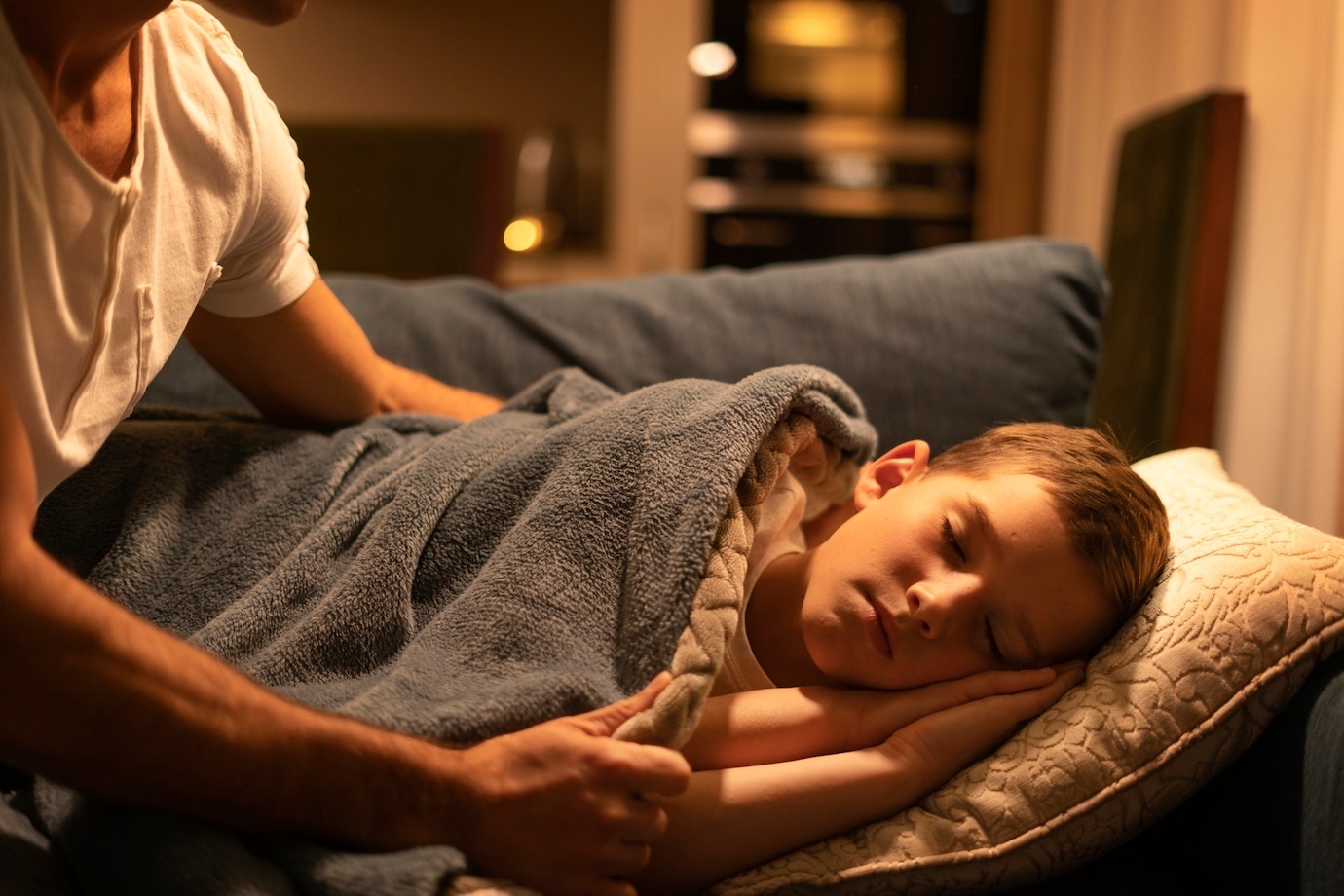Sleeping Tips for Kids
1. Change of environment
- Goal: Break the negative association with the bedroom as a difficult place to fall asleep.
- Practice: If your child has trouble falling asleep, take them briefly to another quiet room in the house, such as the living room. Here they can relax and clear their minds before returning to bed to try to sleep again.
- Why it works: Changing environments can help reduce the tension and frustration associated with not being able to sleep in bed. It also helps to associate the bedroom with relaxation and sleep.
2. Night light on or off
- Purpose: Create a soothing atmosphere that helps you fall asleep.
- Practice: Use a soft nightlight in your child's bedroom. This provides comfort and makes it easier to relax before bedtime. Let them have some time to read or flip through picture books before it's time to turn off the light.
- Why it works: The soft light of a nightlight helps reduce fear of the dark and creates a calm environment conducive to sleep.
3. Not in bed with parents
- Goal: Develop healthy sleep habits and prevent habituation to sleeping in the parental bed.
- Practice: Encourage your child to always sleep in their own bed. Offer comfort and reassurance in their own bedroom, but avoid allowing them to sleep in bed with you.
- Why it works: Children who become accustomed to sleeping in their parents' bed may have difficulty sleeping in their own bed. Sticking to their own sleep environment helps develop independent sleep skills.
4. Finding out concerns
- Purpose: Identify any worries or fears that may interfere with falling asleep.
- Practice: Take time to talk with your child before they go to bed. Ask about their day, experiences and any concerns they may have. Offer reassurance and solutions to problems if possible.
- Why it works: Removing worry can help calm your child's mind and allow them to relax before going to sleep. This promotes a more peaceful transition to sleep.
5. Avoid too much excitement before bedtime
- Goal: Limit stimulating activities that may delay falling asleep.
- Practice: In the final hours before bedtime, try to encourage quiet activities such as reading, drawing or listening to soothing music. Avoid exciting games, TV programs or discussions about exciting events.
- Why it works: Too much arousal can disrupt the natural sleep cycle and make it harder for children to unwind and fall asleep.
6. Create a quiet bedroom
- Purpose: Optimize the sleep environment for rest and comfort.
- Practice: Make sure your child's bedroom is quiet and uncluttered. Minimize clutter and provide a comfortable bed with appropriate bedding. Consider soft lighting and soothing colors to create a calming atmosphere.
- Why it works: A quiet environment promotes relaxation and helps create a sleep-stimulating environment for your child.
7. Make a cabin out of the bed
- Purpose: Provide a sense of security and comfort to facilitate falling asleep.
- Practice: Use sheets or blankets to build a tent or hut over your child's bed. This creates a cozy and safe space where they feel comfortable. Give them a flashlight to play in their "bed tent" before they go to sleep.
- Why it works: Building a cabin can provide a sense of safety and coziness, which helps reduce anxiety and promote relaxation before bedtime.
These tips are designed to adapt to your child's needs and preferences, and can help improve their sleep patterns and promote restful sleep. Experiment with different strategies to discover what works best for your child.

























0 Comments
There are no comments yet, be the first one to comment....